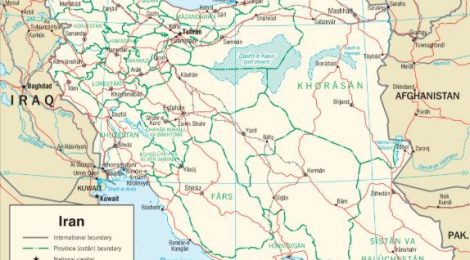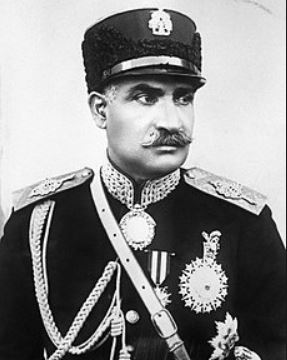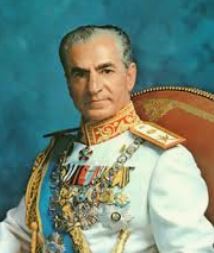
America vs Iran-A History of Why the Iran-U.S. Conflict Began-Part One
America vs Iran-A History of Why the Iran-U.S. Conflict Began-Part One
As the world watches yet another confrontation between the traditional Western powers (the US and the UK), and the Islamic Republic of Iran in the Persian Gulf region, it is worth a quick look at the long history of animosity between the Iranians and the British and Americans.
Our story starts in the first few years of the 20th Century, and looks at British and American (along with Russians too) involvement in Iran due largely to oil and the important location of Iran as the great powers compete for control and influence over a nation that tried to modernize itself, which created internal issues that led to revolutions and political conflict. All these factors combined to create the current situation that pits America vs. Iran.
Iran, which, until 1935, was known as Persia, faced invasion and occupation by the Ottoman Empire (Turkey), the British, and Russians during World War One (1914-1918), despite being an officially neutral nation. Russian and Ottoman armies used northwestern Iran as a battleground, and the British seized the Iranian oil-producing regions in the south to ensure a steady supply of oil to the British Navy. Iranians look back at this time period as very bad for their nation, since, in part due to the war and foreign occupation, a major famine hit Iran, killing up to two million Iranians.
British involvement continued after the war, in part to oppose the influence of Russia, which was now the new communist nation called the Soviet Union, but also to continue to protect their investment in Iranian oil. In the chaotic years immediately after the end of that war, with British support, a Persian military officer named Reza Pahlavi seized power in 1921, and soon thereafter declared himself to be the Shah (King) of Iran.
Britain retained a major interest in Persia/Iran, with British companies having the official okay from the Shah’s government to develop and ultimately control the oil industry in the country. The deals struck by the Shah with the British, while providing incentive for more British investment in Iranian oil development, ultimately sent the vast majority of oil profits out of Iran and into British hands.
Significantly, the Shah sought to modernize his nation, building railroads, modernizing the military, and reducing the influence of religious leaders in government and public life. He passed laws allowing women to wear Western clothing (as opposed to the traditional hajib and chador), and often clashed with conservative Shiite Muslim religious leaders. His son and successor as Shah, would continue the modernization efforts, and his clashes with conservative clerics would lead to his overthrow in the 1970s. Both Shahs were fervent anti-communists, and saw their powerful neighbor, the Soviet Union, as a major threat.
During World War Two (1939-1945), Britain and the Soviet Union jointly invaded and occupied neutral Iran in 1941 on the pretext of keeping out German influence, but for the British, retaining control and access to Iran’s vast oil supply was a major incentive. This mirrored what happened to Iran in World War One to a large extent.
As a result of this invasion, and Iran’s military and diplomatic inability to stop it, Shah Reza abdicated (resigned), and his son, Mohammad Reza Pahlavi, became the new Shah.
Following the end of the war, the new Shah was faced with an attack on his authority by Azeri and Kurdish rebels in the northwest who declared independent pro-Soviet republics in territory still occupied by the Soviets, who had refused to leave Iran in violation of several agreements between the Allies and Iran to evacuate Iran after the end of the war. These two rebel areas were established with the direct support of the Soviets, and this Iran Crisis is considered one of the first flashpoints in the new Cold War that pitted the Soviets against the West, led by the United States and supported by the British.
The U.S. fully supported the Iranian government with diplomatic assistance and backing as the Iranian forces subdued the rebel areas, and U.S. diplomatic pressure convinced the Soviets to evacuate Iranian territory. This incident is considered an early victory for U.S. President Harry Truman’s policy of Containment. This policy called on the U.S. to support nations that were threatened by Soviet or other communist forces in order contain the communists to areas they already controlled. In this instance, preventing the Soviets from extending their power into northern Iran was an example of this policy. In this case, the fighting was conducted by the Iranian army. In other cases, such as in Korea a few years later, American and other allied troops would be used to contain communist advances.
American influence in Iran and in the affairs of the entire region grew, in part due to America’s Cold War conflict with the Soviets, but also because the British, who had long dominated the Persian Gulf and other areas of the Middle East, gave up most of their empire and influence in the region following the end of World War Two. All of the Middle Eastern nations previously ruled or dominated by the British and the French gained full independence in the late 1940s, including Iraq, Syria, Egypt, and, most significantly, the new nation of Israel, born in what was previously known as British Palestine.
Meanwhile, Iran continued as a major oil producer, supplying a significant percentage of Britain’s oil, through The Anglo-Persian Oil Company (APOC), a company which began prior to World War One, and was controlled by the British. Iran received money from the company, but due to unfair agreements in the past, the bulk of the profits went to Britain, not to Iran. An interesting note on APOC is that, in 1954, the company’s name was changed to the British Petroleum Company, better known now as BP. Yes, that BP!
While Iran did receive revenue from her oil, the fact that the bulk of the oil money went overseas was a sore point among Iranians, especially given the history of British exploitation and occupation over the years. Despite the modernization efforts of the two Shahs, most Iranians still lived in poverty, and, in an era that saw a rise in nationalism throughout the Middle East and the rest of the Third World, this led to calls among Iranian politicians to make a better deal for the oil industry, or to cancel all British holdings and nationalize the Iranian oil industry.
As we will see our next article, the political changes that occurred in Iran in the early 1950s led to the rise of a political figure named Mohammad Mosaddegh, who would indeed nationalize the Iranian oil industry, kicking out the British, and sparking a crisis that would directly lead to massive American involvement in Iran over the next 25 years and eventually result in the current hostile relationship between the U.S. and Iran.
Sign up for our newsletter, so you can be notified of our next installment in this series on Iranian-American history and the current situation.



